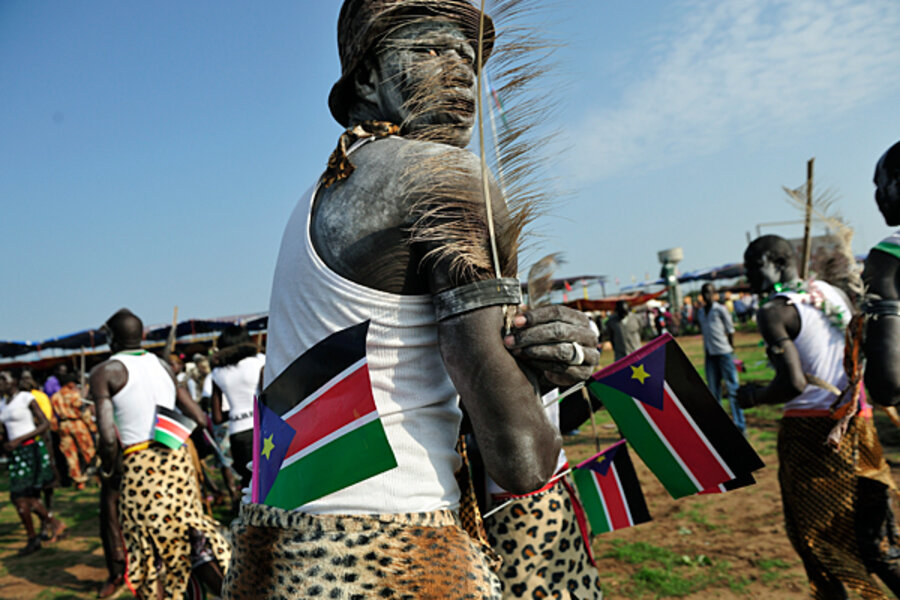Good Reads: How South Sudan was born, how journalism must change
Loading...
How South Sudan was born
For those who follow the births of nations, this was a pretty big week. South Sudan celebrated its first year as an independent nation, after formally seceding from a unified Sudan in July 2011.
The birth wasn’t an easy one. Boundary disputes between Khartoum and Juba broke out almost immediately, as did arguments over how much South Sudan should pay the north for the service of pumping southern oil out to international markets at Sudan’s main port city, Port Sudan. Minor skirmishes have turned into major battles. The number of displaced people has swelled into the tens of thousands.
And yet, the story of how South Sudan came into being is a remarkable one, wrapped around the personal stories of human rights activists, academics, and political players who helped the South Sudanese sell their story to the men and women in Washington, D.C., who could give the idea the political and financial backing that it needed to survive.
Rebecca Hamilton, a Sudan expert and sometime writer for the Monitor, writes for Reuters a marvelous series about these hidden players, and how they made President George W. Bush, members of Congress, religious activists, and modern-day abolitionists care about a country that, at that point, still wasn’t on the map.
India, beyond the hype
If South Sudan is a virtual unknown for most Americans, India has the opposite problem: it is all too well known, and often for the wrong reasons.
Long gone are the stories about starvation and poverty, about overpopulation and religious conflicts. Those problems still exist, to be sure, but most editors would rather read about India’s economic promise, about its democratic system, its embrace of free-market capitalism, its newfound strategic alliance with the United States against a surging China.
All very well, writes academic Sumit Ganguly in this week’s Foreign Policy magazine. But the reality is that India doesn’t live up to the hype, and unless it begins to make some hard choices soon, it may have to resign itself to being a B-list player for years to come. Mr. Ganguly, a political scientist at Indiana University in Bloomington, writes:
Unfortunately, the fascination with India's growing economic clout and foreign-policy overtures has glossed over its institutional limits, the many quirks of its political culture, and the significant economic and social challenges it faces. To cite but one example, at least 30 percent of Indian agricultural produce spoils because the country has failed to develop a viable supply chain. Foreign investors could alleviate, if not solve, that problem. But thanks to the intransigence of a small number of political parties and organized interest groups, India has refused to open its markets to outsiders. Until India can meet basic challenges like this, its greatness will remain a matter of rhetoric, not fact.
All the way to Timbuktu
As a bureau chief in Africa, I could feel the tug of Timbuktu all the way down in South Africa. In ancient times, this city in the Sahara desert was a cultural center, a city of libraries and universities, a target for European explorers, who invariably ended up dying on the way.
I’m glad I got there when I did.
Timbuktu is now under the control of Islamist ideologues who have begun a campaign to destroy historic monuments, shrines, and tombs that are not deemed sufficiently Islamic. The alliance that the Islamists had with Tuareg rebels, who shared a contempt for the Malian government but not the Islamist ideology, has fallen apart. Now the Islamists have turned their eyes on the untold number of manuscripts, some of them dating back 1,200 years or more, that make up a largely unexplored history of precolonial Africa.
A fine piece of reporting by Agence France-Presse shows that the Islamists have at least one obstacle in their road to total destruction: Timbuktu’s small Arab minority.
AFP quoted one Arab militia leader, Tahel Ould Sidy, as saying, “We are not going to allow people who know nothing about Islam to come and destroy our treasures."
Insha’ Allah (God willing).
Now for some good news about journalism
Probably the best news one can find about journalism is that readers still care desperately about the quality of the news they receive. We know this not because of a flux of letters full of praise, but rather the opposite. With the economic viability of the news industry, in its current form, under increasing scrutiny, more journalists are beginning to take a serious look at the way news is gathered and written.
Has the time come to abandon “he said, she said” journalism? asks Linda Greenhouse, former New York Times writer in Nieman Reports, a magazine for Harvard University’s Nieman Foundation for Journalism.
How about truth for a goal? "We may not have a journalism of truth because we haven't demanded one," the cultural critic Neal Gabler wrote in response to the media's performance in covering the health care debate. He noted that by simply reporting the latest guided missile from Sarah Palin or Rush Limbaugh, the media "marshal facts, but they don't seek truth. They behave as if every argument must be heard and has equal merit, when some are simply specious."
Why is it just so difficult to make the search for truth the highest journalistic value?







